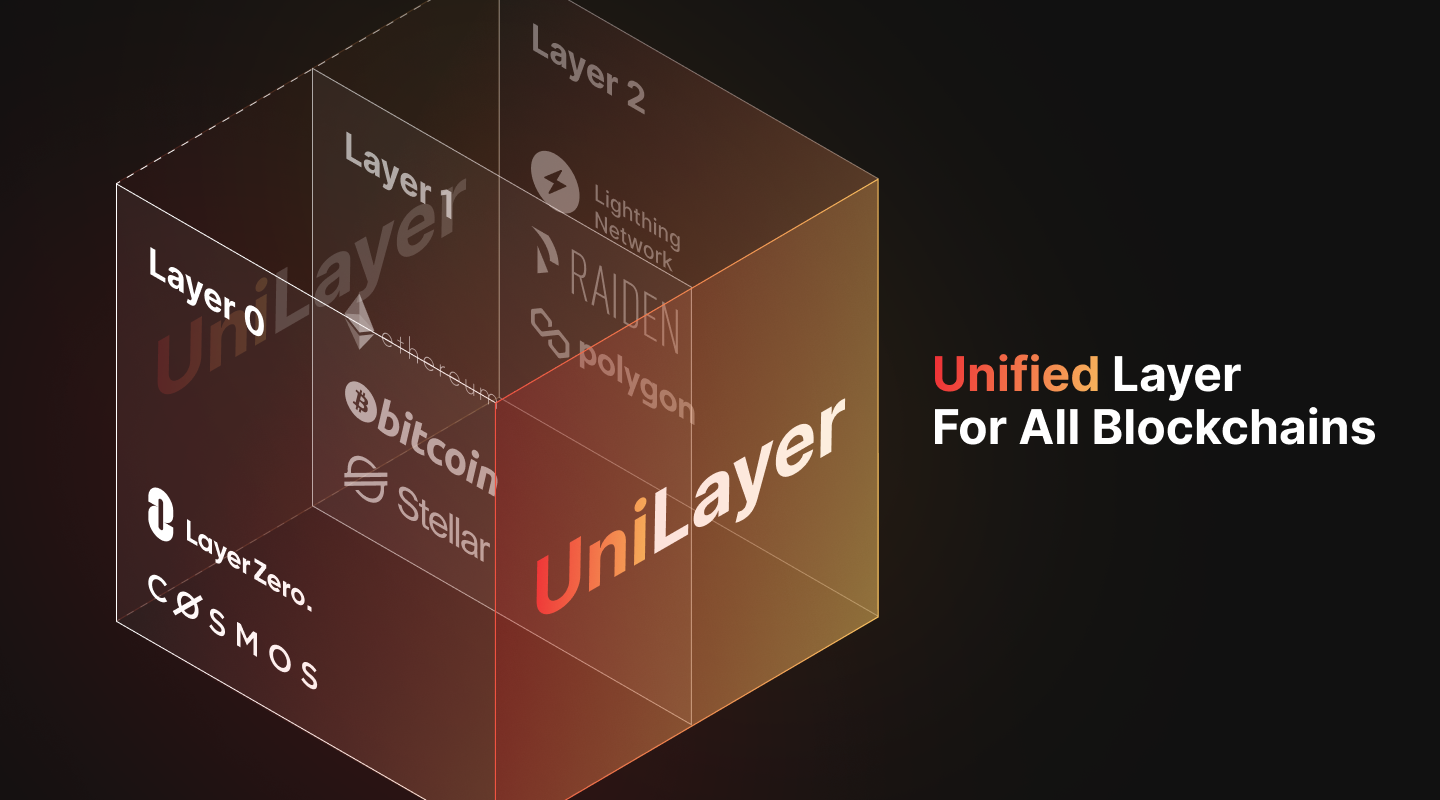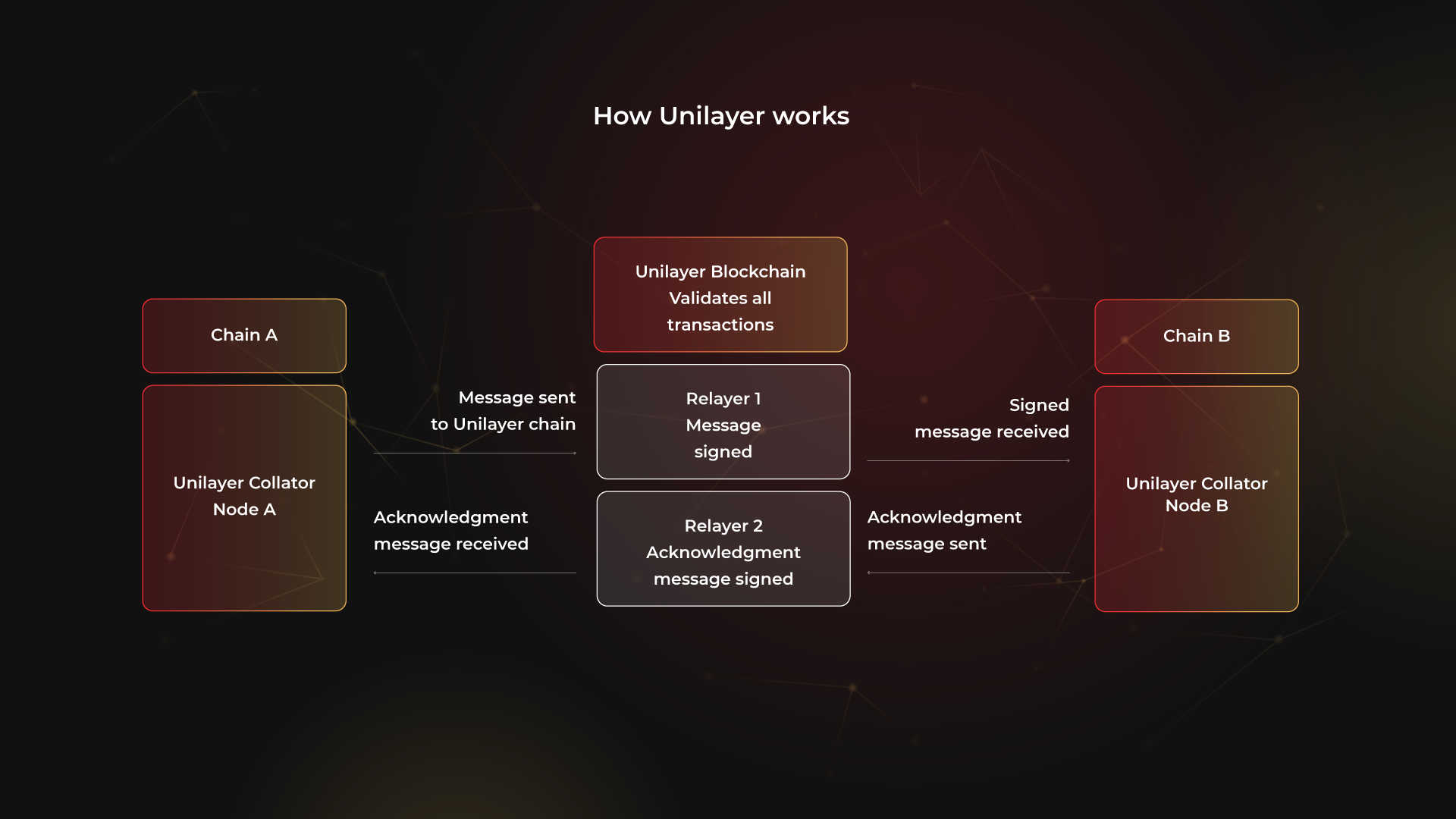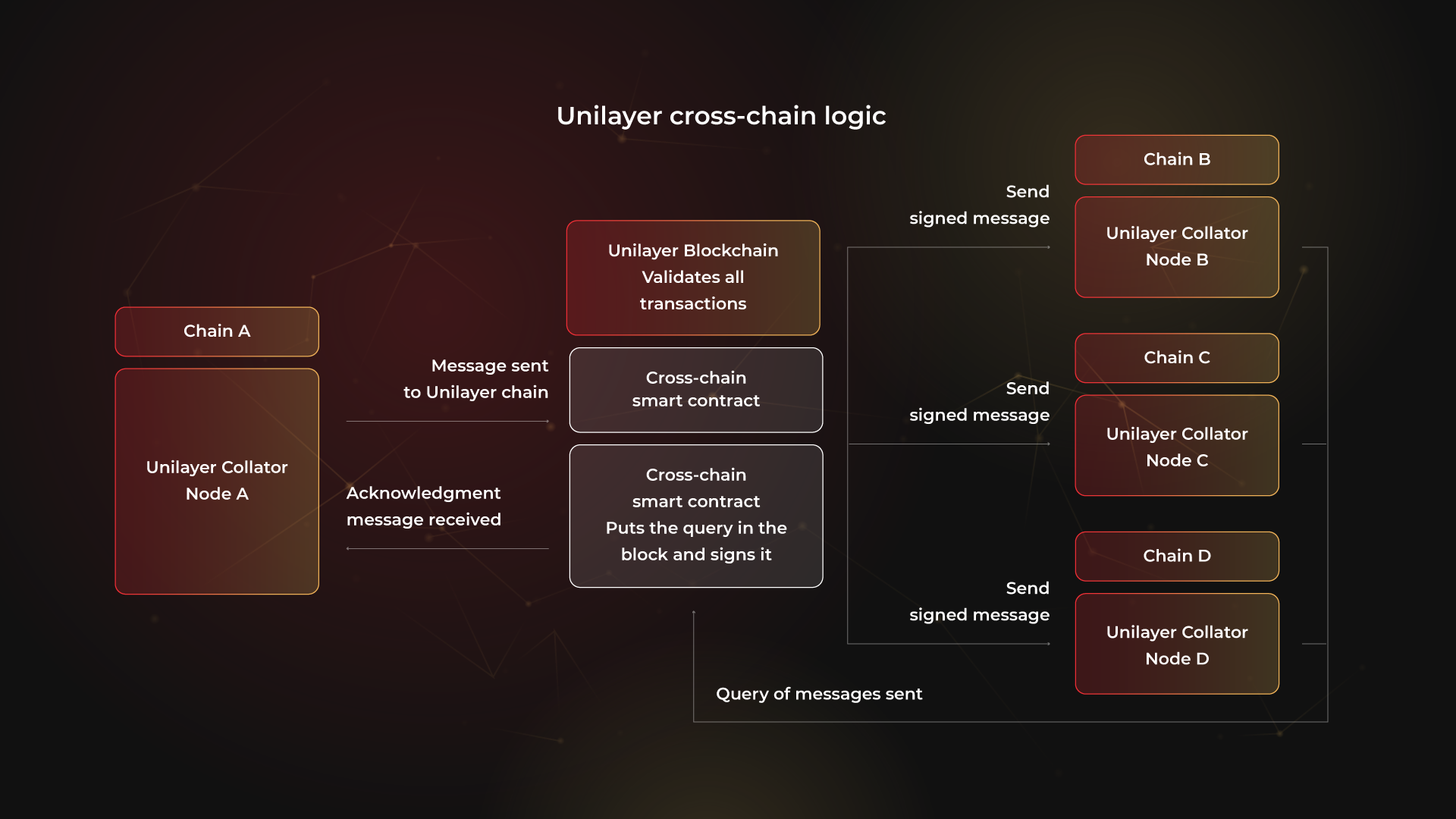UniLayer: A Needed Approach to Blockchain Interoperability

Hailed as a transformative technology, blockchain has the potential to alter entire economies. However, a lack of interoperability between independent blockchains prevents greater implementation and broader use of this groundbreaking innovation.
“Interoperability” is the capacity for different blockchains to exchange data, broadcast information, and transfer unique types of digital assets between their individual networks. Though essential to the principles of decentralization, autonomy – or the ability of a distributed network to operate and sustain itself independently – inhibits compatibility. Consequently, the need for autonomy has resulted in a fragmented multitude of blockchains that are unable to readily communicate.
Thirteen years into Satoshi Nakamoto’s grand experiment, the need for interoperability has never been more evident. Cross-chain protocols like oracles and bridges provide some relief to this dilemma, but they’re hardly a panacea. True interoperability requires more than merely moving assets and data from their source to a destination – it requires decentralized networks to integrate and communicate with each other at their most fundamental level.
Imagine a world where developers and users can access Bitcoin’s security, Solana’s scalability, Tezos’ self-amending model, and Fantom’s speed. Then picture the magnitude of new possibilities such a distribution could introduce into the industry: from faster liquidity transfers to seamless digital property migrations, the potential benefits of truly seamless blockchain interoperability are limitless.
This is the vision we set out to realize, and the one UniLayer achieves.
Inaccessible ecosystems
Siloed blockchains combat the maturation of global, disruptive and openly adopted decentralized networks — if blockchains can’t communicate freely, their utility is severely limited.
Scalability on Ethereum, for example, is still challenging because its individual layers are not as interoperable as they should be on a logical blockchain. This is not least because Ethereum was initially designed for token transfer applications, not data-intensive applications intended to scale a decentralized, Web3 ecosystem.
Smart contracts on most existing blockchains cannot safely “call”, or transfer data between each other. This means many blockchains lack the “secure composability” needed to build large, complex software systems from smaller and simpler building blocks, as was possible in a simpler Web2 world.
Interoperability is needed to connect disparate networks and open the door to powerful new products and services that can utilize the diverse functionality of multiple blockchain networks at once. Crucially, however, it must do so in a secure way that answers the concerns of many interoperability skeptics.
Many current interoperability solutions rely on third-party protocols like oracles to connect blockchains, introducing a point of vulnerability. Numerous security breaches and major asset thefts underscore the problems that have plagued these solutions. This issue must be addressed and, more importantly, solved.
Introducing UniLayer
UniLayer’s goal is to create a fully omnichain future. Inspired by the Bitcoin-based Zerocoin, UniLayer is a layer-1 (L1) blockchain that solves widespread cross-chain interoperability issues and provides a standardized protocol for transferring blockchain data and assets. UniLayer synergizes and integrates with every kind of blockchain -: L0, L1 and L2 - to finally bring complete interoperability to the crypto space.
UniLayer’s Сross-chain Transport Control Protocol (CTCP) solves interoperability’s many hurdles. Acting as a universal transport bus for blockchain information, CTCP moves data across blockchain networks via nodes that natively embed into other chains. These nodes validate and record UniLayer’s transactions and those of all other connected chains, storing every cross-chain message within UniLayer’s distributed ledger. In short, UniLayer’s nodes also become nodes of the partner chain. This approach eliminates the need to use oracles or build new back-end infrastructure when transferring data and assets from a source chain to its destination.

UniLayer simultaneously validates transactions and enables ordered cross-chain interactions through its novel capacity for smart contracts with cross-chain logic. Since UniLayer natively integrates with every blockchain to pass information, DApps can benefit from the unique strengths of different blockchains: Ethereum’s security to tracking user assets, Fantom’s high-throughput to trade and swap, and Solana’s ecosystem to source liquidity. With UniLayer, this vision of complete interoperability becomes a reality.
Universal masternodes
UniLayer’s architecture features three types of masternodes that operate using a user Delegated Proof of Stake (DPOS) consensus sequence. Each validates transactions and takes part in network governance. The following three masternode types each serve a different function on the chain:
- Validators
- Collatorsal
- MTN (Mixed Type Nodes)
Validators receive and verify information and proofs from Collators. They verify this information with other Validators and reach consensus, making them responsible for the security of the network’s transactions. Validators add new blocks to UniLayer’s blockchain, which are then available for all participants in the ecosystem to view, making all cross-chain data visible to every connected blockchain.

Collators assist validators in their work by collecting information about transactions on the other blockchain. They then match and unite these transactions into prospective blocks in the UniLayer network and create the proofs validators need to confirm a transaction. Collators act as messengers for connected blockchains. However, information is not sent directly from one chain to another but coded as a signed message in the UniLayer network and broadcast to the assigned chain.
Collators redirect and constantly trace the status of messages across connected networks. Unlike Validators, though, they cannot change the messages. Finally, Mixed Type Nodes (MTN) combine the functions of a Validator and a Collator.
Solving interoperability insecurity
Interoperability is crucial in a world where enterprises depend on ever-greater levels of collaboration and interaction to operate. Unfortunately, unlimited access to a chain’s architecture can expose an ecosystem’s weak points, which criminals can manipulate. To ensure this doesn’t happen, UniLayer is implementing multiple security and privacy measures, including:
- Node accountability
Each node must deposit ULR governance tokens into the smart contract to prevent malicious action by nodes. If a node is associated with suspicious activity, its collateral is slashed.
- CTCP
UniLayer’s Сross-chain Transport Control Protocol (CTCP) allows for integrated and secure communication between blockchain nodes, eliminating the vulnerabilities inherent in third-party solutions.
- ZK-SNARKs
Based on ZK-Snarks, UniLayer uses a Zerocash Protocol implementation, heavily focusing on privacy. This new generation protocol allows one party to prove it possesses certain information without revealing it.
- Partnerships
UniLayer has also partnered with Smart State, a leading cybersecurity company, to provide further interoperability and cross-chain security solutions.
- Irreversibility
It isn’t unusual for reverse flows and stuck transactions to occur with cross-chain transactions. UniLayer makes it possible for transactions to be reverted if there is a problem with a destination node, an unavailability timeout, a non-compliant smart contract, or other liquidity issues. If any of the conditions apply, transactions remain pending until the sender receives a confirmation of failure or success.
User Delegated Proof-of-stake (DPOS)
UniLayer is built on a Bitcoin-inspired privacy protocol and supercharged with gas-efficient DPOS consensus technology. This type of blockchain consensus algorithm incentivizes users to further decentralize the network with their staked collateral in exchange for profit, i.e. Delegated Proof-of-Stake (aka DPOS), vs. labor and energy-intensive Proof-of-Work.
Contributing masternodes are rewarded based on how much ULR they set aside as collateral and for in-wallet staking. The same algorithm also implements delegated staking (leasing), where UniLayer leases its coins to increase token circulation supply. Users can lease their coins as transactions for accrued interest after thirty blocks. What’s more, they can access accrued interest immediately without closing the lease.

Building for the Investor Community
Investor communities will find UniLayer’s model appealing because the ability to pass data between different blockchain ecosystems seamlessly presents a strong value proposition for effective trading.
Omnichain interoperability facilitates smooth information sharing, more effortless execution of smart contracts, and a more user-friendly experience. Because blockchain networks can natively embed UniLayer nodes into any discrete blockchain ecosystem for easy data flow, UniLayer opens up the crypto-verse to everyone.
It’s a phenomenal opportunity for investors, developers, and user communities to develop partnerships and share solutions between previously isolated ecosystems. By permitting data transfers from one chain to another and improving asset portability, UniLayer is opening the door to immediate liquidity transfer across blockchains, transferring digital property objects across blockchains such as NFTs, and unfettered cross-chain application development. Finally, DeFi developers and users will have affordable, seamless transactions across independent networks without using third-party bridges and oracles or building new, expensive back-end architecture.
Coming up
Our mission of integrating every chain into the UniLayer ecosystem is progressing rapidly. Over the next two years, we plan to have every major chain integrated into our network:
- Ethereum - August 2022
- Fantom - October 2022
- Algorand - January 2023
- Solana - February 2023
- Tezos - April 2023
- Bitcoin - June 2023
- Cardano, NEAR, EOSIO - August 2023
- Polkadot - February 2024
We welcome developers, projects and partners on our mission to unify and evolve the entire blockchain space.
Keep in Touch
To stay up to date with all the latest UniLayer developments, be sure to join our community.

